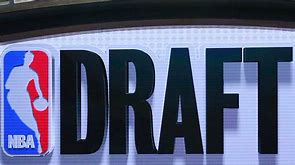The 2018 National Basketball Association player draft will take place Thursday night in Brooklyn. Though the draft was narrowed to only two rounds (mercifully) in 1989, that means only sixty players will be chosen from among the hundreds of eligible college hoopsters and foreign entrants.
The NBA draft is a chance to build your team with new talent which could lead your team to years and years of success or crush your fans with more years of mediocrity.
Just like a business does in hiring a new employee, NBA teams need to carefully evaluate what your team needs before making a hire.
If your business is a utility company, you want a balance of engineers, accountants, service technicians, IT workers, etc. A successful business team is comprised of employees whose combined skills lead to overall excellence.
Likewise, a professional basketball team’s needs will be based on an honest evaluation of the current talent. The NBA draft provides a relatively economic way to bolster your roster without going into the more expensive and oft-times ill-advised free agent pool.
On Thursday night, you will hear (again and again) a term which I really despise. It is called “the best available athlete”, and who determines that anyway?
If your business has a need for an engineer and talented engineers are scarce, you should select an engineer, right?
If your NBA team desperately needs a talented point guard to lead the team, you should draft a talented point guard!
By the end of the first hour of the NBA draft coverage, it is a guarantee that you will hear analysts trying to convince your favorite team that they should select the “best available athlete” regardless of your team’s obvious need. If you have a freezer full of steaks, why would you select another one? That makes no sense either!
Though a premier talent like Tim Duncan or LeBron James may come along every ten years, having the top pick in the NBA draft does not always translate into instant success.
Just last season, the Philadelphia 76ers selected guard Markelle Fultz from the University of Washington with the first overall pick. Fultz failed miserably to live up to his number one billing and was even struggling to remember how to shoot a basketball after recovering from an injury earlier in his rookie season.
At the #13 spot in the 2017 NBA draft, the Utah Jazz made shooting guard Donovan Mitchell from Louisville the team’s top selection. Mitchell responded with a stellar initial season and led the Jazz into the playoffs again as he contributed nearly 21 points per game.
Utah has selected great talent over the years from the middle of the NBA draft.
In 1984, the Jazz grabbed future Hall-of-Fame guard John Stockton with the 16th overall pick. The following year, Utah took a chance on a raw talent from Louisiana Tech named Karl Malone with the 13th pick in 1985. Nicknamed “The Mailman” because he always delivered on the court, Malone became both a Hall-of-Famer and the second leading scorer in the history of the NBA.
By shrewd evaluation of talent (Stockton was from relatively unknown Gonzaga before it became a national powerhouse while Malone quietly developed his game in north Louisiana) to meet the needs of the team, the Utah Jazz management took two consecutive mid-first round draft choices and built a perennial NBA challenger.
Sometimes, a talented basketball player isn’t necessarily a highly-recruited high schooler who goes the one-and-done route with a Kentucky, Duke, or UCLA. History has shown that some of the best NBA talent has needed a little more time on the vine to learn their trade, develop confidence, and mature as a person.
Watch carefully what happens on Thursday night at the NBA draft. The perennial losing franchises will select one of the media-hyped “can’t miss” guys at the top of the heap, while the NBA’s most successful franchises will somehow find a few diamonds in the rough and continue their winning ways.
As usual.

